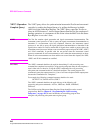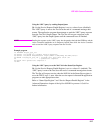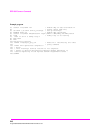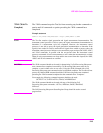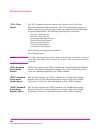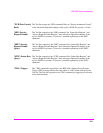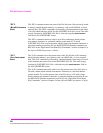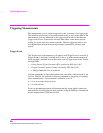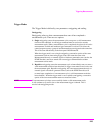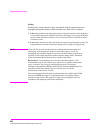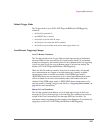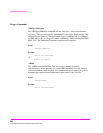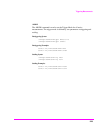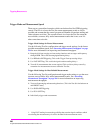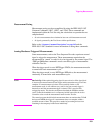
224
S:\agilent\8920\8920b\PRGGUIDE\BOOK\SECTIONS\tm.sec
Triggering Measurements
Triggering Measurements
The measurement cycle is started (triggered) by the occurrence of a trigger event.
The reliability and accuracy of the measurement result, as well as the speed of the
measurement cycle are influenced by the trigger mode in effect at the time the
trigger event occurs. Some modes are faster than others; some modes provide
settling for signals that may contain transients. The best triggering mode to use
will depend upon the measurement requirements (repeatability, accuracy and
speed).
Trigger Event
The Test Set starts a measurement cycle when a valid Trigger Event is received. A
Trigger Event is analogous to telling the Test Set to “start the measurement now.”
There are three commands that can be used to issue a Trigger Event to the Test Set
through GPIB:
• A Group Execute Trigger Command (GET) as defined by IEEE 488.1-1987
• A Trigger Common Command (*TRG) as defined by IEEE 488.2-1987
• A :TRIGger:IMMediate Test Set command.
All three commands are equivalent and have the same effect when received by the
Test Set. The Test Set responds to the three commands by triggering all currently
active measurements. A measurement is defined as active if
1. it is on the currently displayed screen
2. it is in the ON state
From a programming perspective this means that the screen which contains the
measurement of interest must be made available using the DISPlay command and
that the measurement STATe must be ON.



